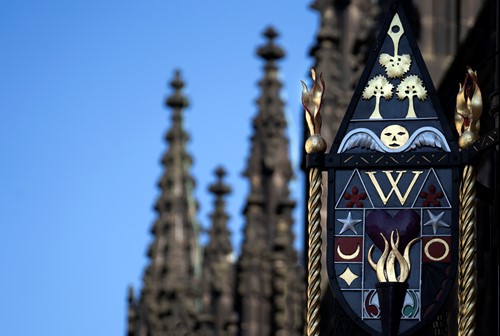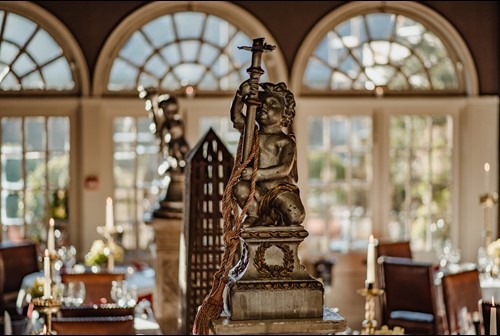The historic heart of Edinburgh's old town
Few restaurants in the world date back as far as the phenomenal medieval buildings housing The Witchery. So, in truth, our history extends back further than 1979 when restauranteur James Thomson brought his imaginative concept to life. Over five centuries, much has happened here at the gates of Edinburgh Castle in the ancient Old Town.
Our Story
The Witchery by the Castle was established by James Thomson in a historic building at the gates of Edinburgh Castle. At the historic heart of Edinburgh's Old Town, The Witchery, now in our fifth decade, takes its name from the hundreds of women and men burned at the stake as witches on Castlehill during the sixteenth and seventeenth centuries. It is reputed that more witches were put to death on Castlehill during the reign of James VI than anywhere else in Scotland. The area around The Witchery by the Castle remains steeped in history.

The Witchery occupies a substantial sixteenth Century building, Boswell's Court, named after a former resident, James Boswell, the uncles of Dr Johnson's biographer. It has been in continuous occupation for over four centuries, latterly as committee rooms for the Church of Scotland and as the Rectory of a nearby church. Castlehill has always been at the very centre of Scottish history; The Palace of Mary de Guise, mother of Mary Queen of Scots, stood on the opposite side of the street, a site since home to the Scottish Parliament and adjacent to some of The Witchery's luxurious suites in historic Sempill's Court.
Built in 1595 for merchant Thomas Lowthian, the candlelit Witchery is entered from a traditional close off the Royal Mile. The original carved inscription on the doorway bears his initials and motto 'O Lord in thee is all my traist' can still be read. Nearby the ancient stone doorway built into the tower of the Secret Garden features the arms of the Duke of Gordon, Keeper of the Keys to Edinburgh Castle. In The Witchery heraldic painted and gilded ceilings, based on those at the Palace of Holyrood house, reflect close links of the Auld Alliance between France and Scotland. The tapestry-hung walls are panelled with seventeenth century oak rescued from a fire at St Giles Cathedral and panelling is from a Burgundian Chateau. Gilded leather screens, opulent red leather upholstery, tapestries, and antique church candlesticks complete the scene.

In 1990 James opened a second restaurant in Boswell's Court, the Secret Garden, on an abandoned schoolyard located next to the original Witchery dining room. This enchanting room is entered via a stone staircase from the courtyard above and looks onto a hidden, topiary and urn filled terrace, where guests can dine in the summer. The splendid painted ceiling is in typical Scots vernacular style and was inspired by the famous Rossend Castle ceiling now in the National Museum of Scotland. It portrays imagery from the tarot, and the mischievous bagpipe-playing cherub features among other angels with bagpipes that feature at The Witchery.
The series of painted doors and panels portray elements of Edinburgh’s ancient wine trade with France, a tradition we continue with a cellar running to 900 bins that holds a rare Wine Spectator Best Award of Excellence among its many other accolades.
The Witchery is also home to just nine, uniquely luxurious and fabulously theatrical suites for those looking for more Witchery magic than just dining can provide. Located above The Witchery and in the adjacent seventeenth-century Jollies Close, they are frequently featured in magazines as one of the world’s most romantic destinations. Described as one of the seven wonders of the hotel world by Cosmopolitan, filled with antiques, lavish interiors, opulently draped beds and roll-top baths for two, they are truly indulgent.




